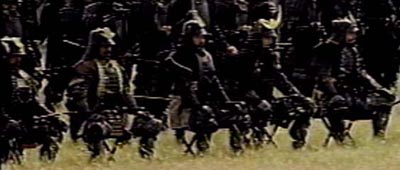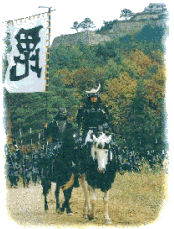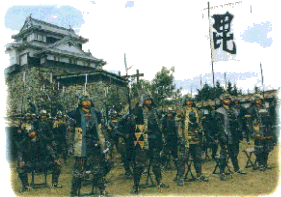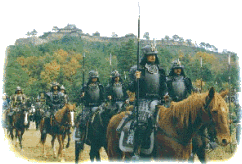

There were many subdivisions of military rank within the Samurai class.Each rank received lands of an appropriate koku rating,except for the lower ranks who were not granted lands but instead received a direct stipend of rice from the Daimyo's lands.This method of salaried payment eventually became universal for Samurai,until this too was phased out in favor of a cash payment for the supposed market value of the rice.

The Yamauchi of Tosa are a good example of the subdivisions within the Samurai.They recognized ten ranks, five of upper Samurai,and five of lower Samurai.The highest under the Daimyo were the 'karo' or elders with lands of between 1500-10,000 koku. On the battlefield they would be generals and in times of peace they headed the major administrative departments.The four ranks beneath them, the officer class in wartime,had lands of 50-1500 koku depending on rank.
There was some mobility between these ranks in terms of promotion,but very little between the upper and five lower ranks which extended down to the ashigaru or light foot soldiers. They were kept on a subsistence level with a stipend of between three and seven koku.

There was a similar system for most Daimyo.The highest ranks of the Shogunate were staffed by 'fudai' Daimyo who had the privilege of administrative service.Below them were the 'hatamoto',a name which literally means under the standard, that being the position which thay would occupy in battle. Some 'hatamoto' occupied general staff positions in the administration,for which they received payment in the form of a rank grant,either lands or stipend,and an extra payment for the office.The majority of 'hatamoto' ,however,were employed in the army being split up into guard groups,specialized units, or castle garrrisons.The lowest ranks were called 'go-kenin' or honorable housemen.
During the Tokugawa Shogunate,every Samurai in service was expected to keep himself in combat readiness with a supply of weapons and men. For example,according to the detailed regulations schedule of 1649, a 'hatamoto' with an income of 2000 koku would be expected to supply personal service,plus eight Samurai of 'go-kenin' rank,two armor bearers plus one reserve,five spearmen plus one reserve,four grooms,four baggage carriers,one sandal bearer,two 'hasambiko' bearers plus one reserve (the 'hasambiko' was a travelling case carried on a pole),one archer, two arquebusiers,two fodder bearers,one 'no-dachi' (longsword) bearer, two ashigaru leaders and one rain-hat carrier. All the soldiers in the servant categories were to be fully armed Samurai of the lower or ashigaru type.

By Tokugawa times,every Samurai in Japan was either a member of someone's houseband or a 'ronin' (literally a wave man,the name given to a Samurai without a master,through death and extinction of a line, or confiscation of domains and so forth).Housebands evolved in two ways; by a powerful Daimyo defeating a neighbor and enlisting the defeated lord's Samurai into his army, or by a Daimyo attracting followers as he rose to prominence.